Introduction to pig diseases: Pig production is an important component of global food security and it is a profitable business. Some diseases affect the health of pigs and the productivity of the global swine industry. Keeping their animals healthy is key to the success of pig breeders. To do this, it is important to know about the diseases that occur in the herd. Early treatment of pigs with proper medication is the next step.
The swine disease prevention strategy should be a common practice for all hog farmers. Keeping animals healthy is important for a successful farm. A health plan for your herd will help reduce the incidence of the disease. Specific diseases related to pigs can have serious effects on herds, farms, and people themselves. The entry of viruses and bacteria into pig farms can be devastating on many levels. Maintaining the right temperature for pigs, diseases are a threat not only to the health and well-being of the animals but also to the sustainability of the herd.
Guide on pig diseases, how to tell if a pig is in bad health, common pig diseases, disease prevention tips, vaccination program and management practices
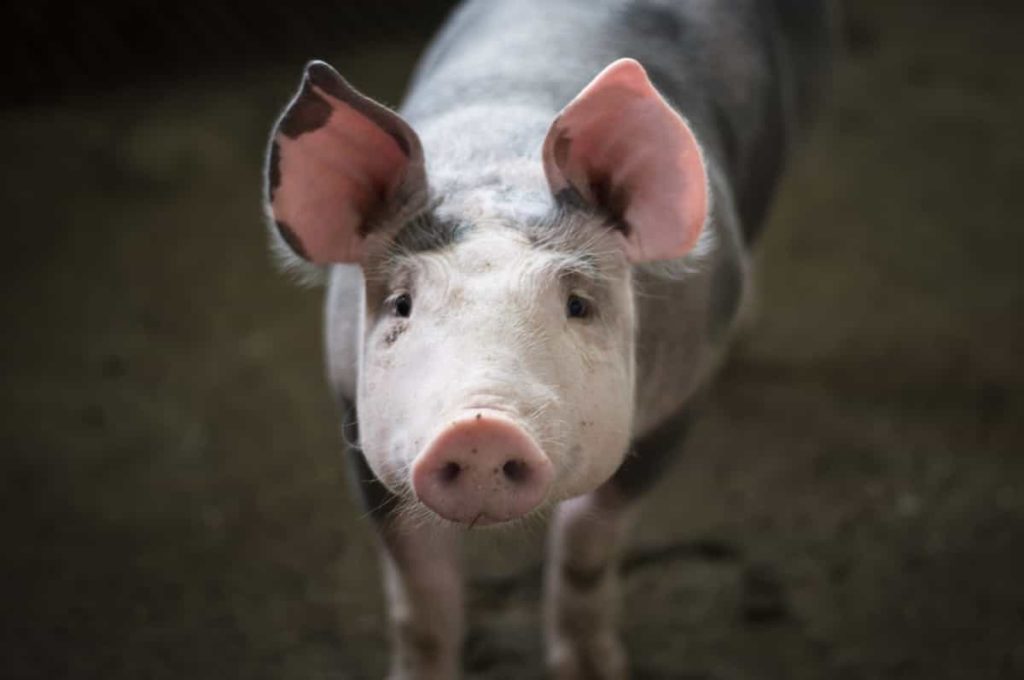
How to tell if a pig is in bad health
Common Symptoms – Dullness, loss of appetite, hard work or rapid breathing, sudden death, weight loss, low weight gain, and fever usually manifested by shivering of the pig.
Signs on the skin – Redness or discoloration of the skin, hair loss and hardening of some parts of the skin, itching, and cracking of the skin.
Other symptoms – Lameness, cough, abnormal nasal discharge, diarrhea with putrid smell, abnormal discharge and color of feces, and abortions.
Symptoms of a sick pig
Here are some common symptoms that may indicate that the pig is sick or in pain;
- Loss of appetite
- Change in mood
- Lethargy
- Coughing or nasal discharge
- Discolored vaginal discharge
- Hemorrhage from the eyes, ears, nose
- High temperature (103 or up)
- Elevated respiration or respiratory issues
- Constipation
- Standing with his back hunched
- Trouble walking or difficulty “getting traction” as he starts walking
- Patchy hair loss
- Hair standing on end
- Excessive itching
Common pig diseases
- Pig diseases can be caused by bacteria, viruses, protozoa, malnutrition, toxins, internal and external parasites.
- Some bacterial diseases in pigs include swine erysipelas, swine dysentery, infectious polyarthritis, etc.
- Diseases of viral and mycoplasma include African swine fever, swine influenza, swine enzymatic pneumonia, swine vascular exanthema, transmissible gastroenteritis, etc.
- As a health problem in pigs, helminthiasis is mainly caused by lungworms such as lungworm, ascaris worm, etc.
- Nutritional diseases include piglet anemia, parakeratosis, etc. Some external parasitic infections include mange, lice, jiggers, etc.
In case if you miss this: Alpine Goat Farming – How To Start, Breed Profile
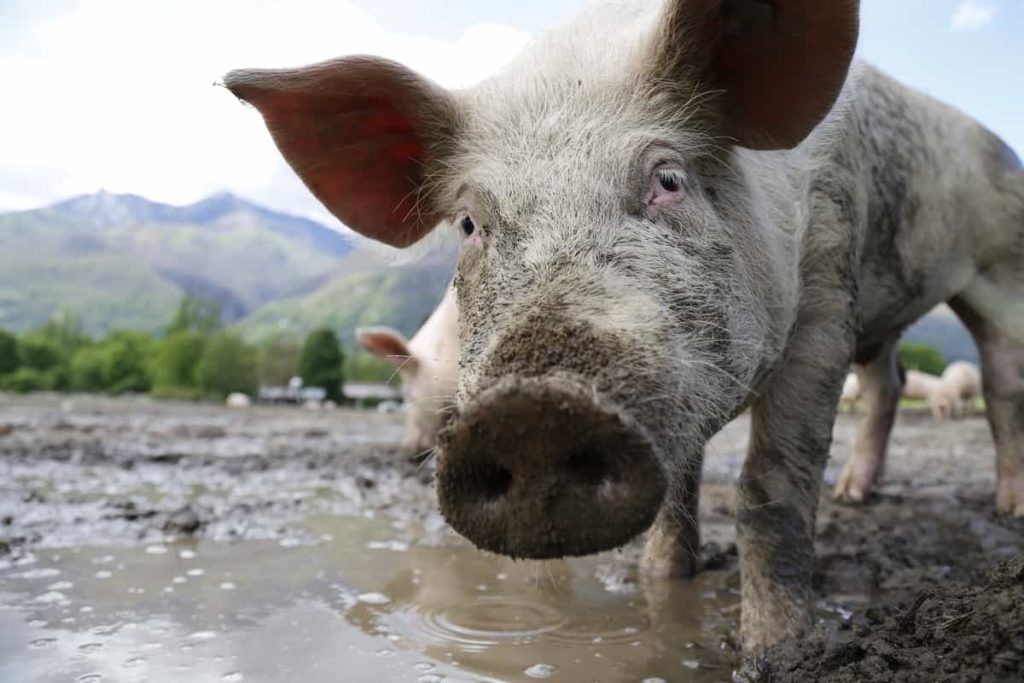
Common pig diseases and their control
Pigs can have a variety of health problems, ranging from common ear infections to complex diseases such as cancer. The common health problems in potbellied pigs are constipation and respiratory troubles.
Rheumatoid arthritis is one of the most common diseases of the pelvic floor. In pigs, arthritis may be due to past or present weight problems or lack of exercise, but it can also be the result of pig rearing, age, or previous diet. To reduce this problem, it is important to keep your pig healthy such as consulting your veterinarian about possible treatment.
Classical swine fever
It is a contagious viral disease of pigs. The CSF is caused by a virus belonging to the family Flaviviridae and the genus Pestivirus.
Symptoms
Acute Infections – In severe form, pigs appear sick, inactive, and drowsy with arched backs. Some pigs stand with bowed heads and straight tails. Stirring, vomiting, high fever, anorexia, and constipation. Conjunctivitis, astonishing gait, weakness of the back, and purple color of the skin of the abdomen. There will also be severe diarrhea during the last stages.
Chronic form
Chronic form means dullness, capricious appetite, pyrexia, and diarrhoea for up to 1 month. Other symptoms include weight loss, hair loss, dermatitis, and discoloration of the abdomen or ears. Chronically infected pig’s head may be disproportionately larger than the smaller trunk.
- Diagnosis – More based on high morbidity and mortality, high fever, diarrhea.
- Vaccination – The modified live vaccine (MLV) is used to control CSF.
In case if you miss this: Pig Farming In Nepal – Breeds, How To Start, Plan
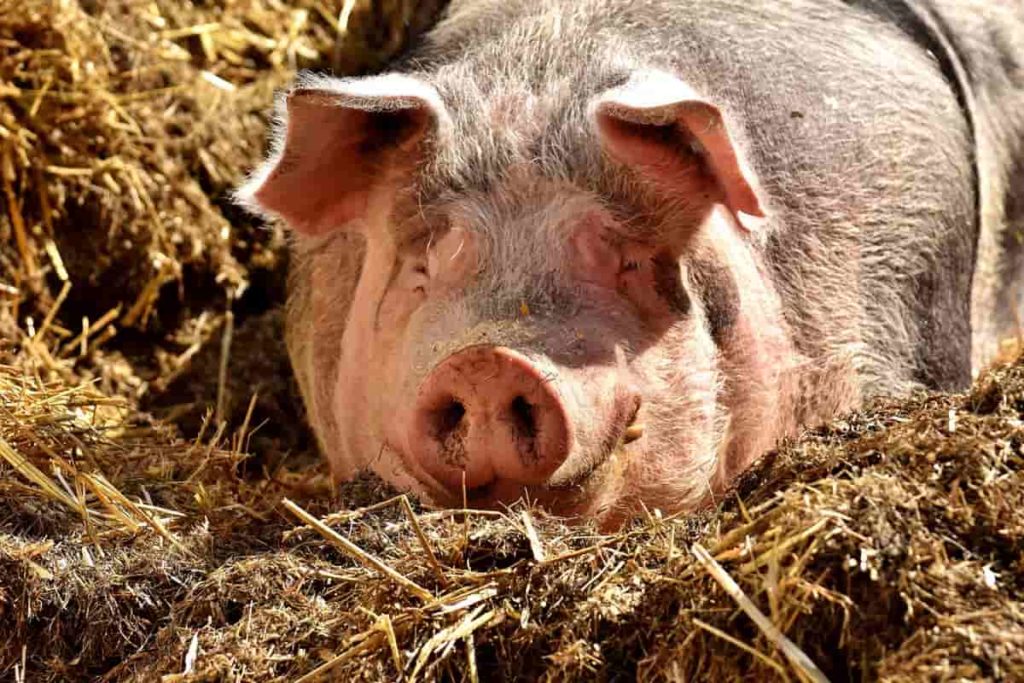
Swine influenza
It is a highly contagious respiratory viral infection of pigs caused by the swine influenza virus, characterized by coughing, nasal discharge, elevated rectal temperatures, lethargy, difficulty breathing, and loss of appetite. Decreased infertility and rarely associated with reproductive disorders such as miscarriage.
The first clinical symptoms are fever (40.5-41.5ºC), puffy eyes, anorexia, weight loss, depression, prostration, and agitation which leads to weakness. These symptoms are followed by a sudden onset of severe respiratory symptoms, including coughing, sneezing, abnormal breathing in the abdomen, and discharge from the eyes and nose. Increase in fertility stock, abortion, infertility, small weak litter production, and stillbirth.
Prevention and control
Good husbandry practices that are all-in/all-out to control the spread of the disease, clean drinking water supply, and clean up affected buildings to proper use of disinfectants.
Piglet Anemia
A newborn piglet has only a limited supply of iron for the synthesis of hemoglobin. This is due to the improper transfer of iron to the fetus. The sow milk has very low iron content and suckling pigs should be supplemented with iron in the first few days to avoid piglet anemia.
Symptom
- Pale in the ears and belly region
- Listlessness
- Rapid breathing
- Often exhibit diarrhea
Control
- Keep fresh, clean soil in the piglet’s pan daily.
- Use soil soaked with 500 g of ferrous sulfate, 75 g of copper sulfate, and 3 liters of water solution.
- Daily administration of 4 ml of 1.8% ferrous sulfate solution.
- All these methods are labor-intensive and the safest and easiest way to deal with piglet anemia 3 days after birth 100-150 mg iron to be injected with iron dextron. If necessary, a second and slightly shorter injection can be given after 3 weeks.
Exudative dermatitis
Symptoms of this disease are skin lesions caused by infection with a bacteria called Staphlococcus hyicus. In severe cases, mortality can occur, as the bacteria can damage the liver and kidneys. Lesions first appear as dark areas of the skin, which spread and stick with a feeling of grease. Antibiotics are used to treat infections with skin protectors. Autogenous vaccines have also been used successfully. Improving hygiene in pig housing is key to preventing this condition, as well as pruning before and after sowing. It is also important to reduce the chances of skin abrasions, as this is how the infection enters the body. Rough floors, jagged teeth, sharp tools, or even rough particles start to scratch.
Coccidiosis
This disease is very common in suckling piglets. It causes diarrhea, which can be bloody, often between the ages of 10 and 21 days and up to 15 weeks. Secondary infection can be caused by damage to the intestinal wall. Depending on the level of occurrence of the form, preventive treatment of coccidiostats may be appropriate. Hygiene should be improved to eliminate the cycle of infection. Providing a warm, dry, clean crepe area will help reduce the burden of parasites and reduce the chances of coccidial infection.
Swine dysentery
Infected animals suffer from diarrhea with or without blood. It is caused by the bacterium Brachyspira hyodsenteriae. After weaning, the growth rate of pigs slows down, and, in some cases, sudden death can occur. Antibiotics are used to treat the disease, either as feed, water, or injections. Reducing storage density can be an effective way to reduce the pressure and stress of infection in the herd. In addition to improving hygiene levels, rat control is a top priority; Rats are the vector of this disease. Strategies for buying and introducing alternative stocks should be reviewed, as this is a great way to introduce the disease.
In case if you miss this: How To Start Pig Farming In Kenya, Tips and Ideas
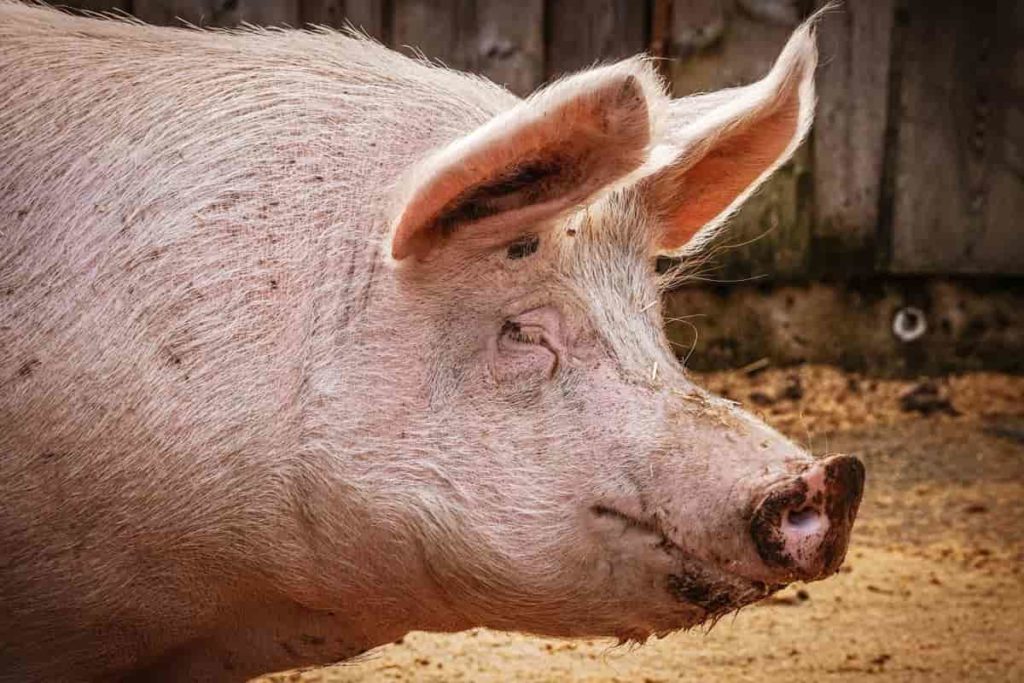
Porcine parvovirus
If sows infected with the parvovirus (PPV) during pregnancy, can be a reproductive disease, but not in all cases. If this happens, usually in the gilts, reproductive function is significantly affected. Mummification and stillbirths are born, resulting in smaller litter sizes. Other reproductive diseases have similar symptoms, so accurate diagnosis is essential. Unusually, the virus can survive outside the host for many months, making it endemic to most herds. No cure is available; routine vaccination of gilts is recommended to prevent this disease.
Mastitis
Symptoms of mastitis include decreased milk production, loss of appetite, and high body temperature. Mastitis is a disease that occurs in females and has symptoms such as decreased milk production, increased body temperature, and decreased appetite. The disease is caused by a bacterial infection of the memory glands, where skin discoloration can be seen. Antibiotics and anti-inflammatory drugs are the most effective treatment for mastitis. In general, a combination of oxytocin and corticosteroids is recommended to treat mastitis. As with other pork diseases, it is important to improve hygiene in front houses.
Healthy nutrition is an important factor in boosting the immune system during the last stages of pregnancy. Stress is also considered a factor in the presence of mastitis, especially if teats can damage the sow housing facilities. Mastitis has a significant effect on productivity as the number of weaning piglets can be significantly reduced.
Foot and mouth disease (FMD)
FMD is caused by a picornaviridae aphthovirus. 7 major serotypes have in their turn many strains. More than 60 subtypes of the virus have been identified so far, making it difficult to develop effective vaccines against it. Symptoms of this problem include excessive salivation, loss of appetite, fever, and death in severe cases.
Routine vaccination is used primarily to protect the reproductive system from FMD. However, vaccination is difficult because its protection is only short-term. Because FMD usually occurs in the winter, pigs should be vaccinated in the fall. Furthermore, because there are so many types of serotypes, vaccines need to be multiplied to be effective. The disease can spread to other farm animals, so precautions should be taken against goats. There is no cure for the disease and infected animals should be culled.
In case if you miss this: Pig Farming In The Philippines, How To Start
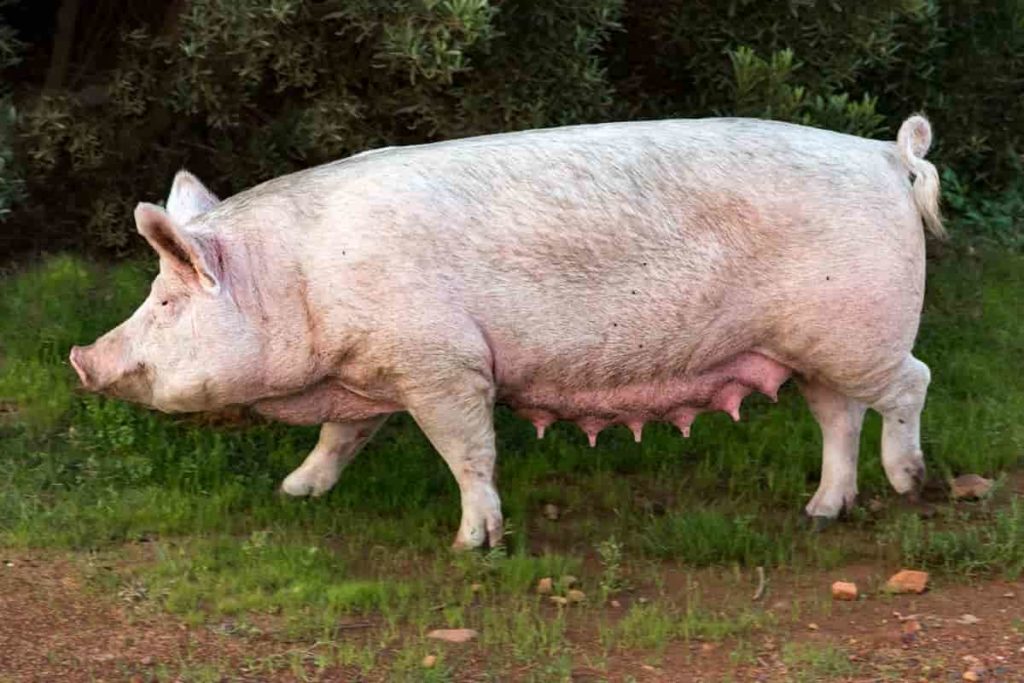
Disease prevention tips for pigs
- Veterinary Services protects the health, quality, and market potential of animals, animal products, and veterinary biologics to prevent, control, and/or eliminate animal diseases, and to monitor and promote animal health.
- The location of the pig farm is an important factor in controlling diseases.
- Ideally, a pig farm should be located in an isolated area away from other animal farms.
- Introducing new pigs – Bringing a new pig is the single most important way to introduce a new disease to the farm. Pathogens can enter the form in many ways. When farmers buy pigs, they often do not know the health status of the animals they buy. As a result, bacteria, viruses, skin parasites, or insects come with these purchased pigs. For better disease control, it is always advisable to bring pigs from a farm/source if possible.
- The purchase of pigs directly from the market must be strongly discouraged as it is a major cause of the spread of several diseases in healthy pigs from infected pigs.
- Quarantine – Quarantine is a very useful way to detect more dramatic diseases on time to prevent their spread. Pigs that have recently been infected with severe diseases may not show any signs of the disease, but if they are monitored for a few weeks, they may show signs of the disease. Newly purchased pigs should be kept separate from the rest of the herd for some time. The quarantine shed must be located away from the main herd.
- Starting with high health is the important factor in pig farming. Get a herd health report before buying stocks. Get your doctor to talk to their doctor. Check breeding company’s credibility from a disease perspective, not just genetic makeup.
- Maintaining good biosecurity is important to preventing the spread of disease. Managers should also ensure that breeding stocks are purchased from high-quality herds and properly quarantined before introduction.
- Vaccines have been developed for many diseases and are routinely administered. However, producers should be vigilant and make sure that all stockholders know the signs and symptoms of common diseases.
- When it comes to disease prevention, re-occurring topics include hygiene, ventilation, and stress reduction. Pig breeders need to be provided with an environment that is conducive to animal health and free from disease-causing agents. In addition to reducing the pressure of infection, measures such as good nutrition and good rearing should promote immunity.
- Prevention is better than cure, and having a flock health plan will help reduce the incidence of the disease in pigs.
- Biosecurity is still the most important way to keep the disease at bay. It is very important to stay free of disease or maintain your current state of health and should be part of any eradication program. Otherwise, the chances of long-term success are very limited.
- Getting started and staying disease-free gives the farmer the best chance to be truly competitive. Biosecurity is a key component, as well as the source of high-health pigs. To maintain genetic competition, import semen and grow your alternative, it reduces the risk of disease transmission through live pigs and maintains the health and stable immunity of the herd.
- Biosecurity is defined as a set of preventative measures designed to prevent the spread of disease in pig farms. This is a combination of;
In case if you miss this: Pig Farming In South Africa, How To Start, Plan
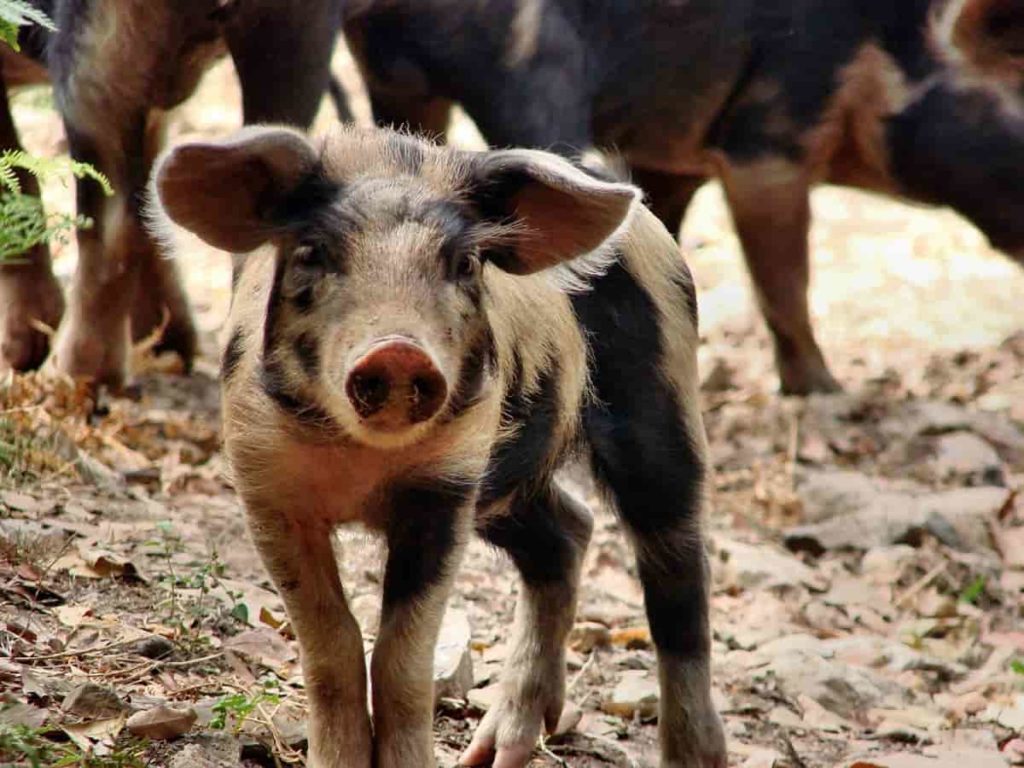
- Good herd management practices,
- Careful observation,
- Quarantine,
- Healthy pig feed
- Maintaining health and hygiene
- Providing a clean environment for animals
Vaccination program for controlling pig diseases
Regular vaccination programs are required in this country for local diseases such as swine fever and FMD. Also, there are even farms that have not vaccinated their pigs for more than a year. Because pigs are sold between the ages of seven and eight months, and the number of sowings in a productive herd is about one in ten, about 90 percent of the pigs on the farm are affected by failure to vaccinate pigs in the farm being susceptible to swine fever. Unfortunately, in farms where swine fever vaccination is irregular, there are usually people who are most at risk for the spread of swine fever. These farms are located in high-risk areas, i.e., areas where there are more pig farms.
Management practices for pig disease prevention
In pig farming, management plays a very important role in most disease problems. Poor management and breeding methods make pigs prone to disease problems. Parasites, vaccinations, malnutrition, heat, cold, weaning, and dirty pens represent stress factors. Stress affects the immune system and reduces the pig’s resistance to disease agents. In pigs, cold stress is an important predisposing cause of neonatal piglet diarrhoea.
Problems such as diarrhea, enzymatic pneumonia, uneven growth, and unthrifty pigs after weaning are overcrowding, inadequate trough space or water supply, poor food quality, inadequate temperature, and poor air control are factors rather than infectious agents. In most cases, the solution is not in the use of antibiotics or other medications. In the long run, proper housing and management practices are more important than just the use of drugs in controlling diseases.
- Economical Aquaculture: A Guide to Low-Budget Fish Farming
- 15 Common Planting Errors That Can Doom Your Fruit Trees
- How to Make Houseplants Bushy: Effective Tips and Ideas
- Innovative Strategies for Boosting Coconut Pollination and Yield
- Pollination Strategies for Maximum Pumpkin Yield
- The Complete Guide to Chicken Fattening: Strategies for Maximum Growth
- Natural Solutions for Tulip Problems: 100% Effective Remedies for Leaf and Bulb-Related Issues
- Revolutionizing Citrus Preservation: Towards a Healthier, Greener Future
- Natural Solutions for Peony Leaf and Flower Problems: 100% Effective Remedies
- Maximizing Profits with Avocado Contract Farming in India: A Comprehensive Guide
- Natural Solutions for Hydrangea Problems: 100% Effective Remedies for Leaf and Flowers
- The Ultimate Guide to Choosing the Perfect Foliage Friend: Bringing Life Indoors
- From Sunlight to Sustainability: 15 Ways to Use Solar Technology in Agriculture
- The Ultimate Guide to Dong Tao Chicken: Exploring from History to Raising
- The Eco-Friendly Makeover: How to Convert Your Unused Swimming Pool into a Fish Pond
- Mastering the Art of Delaware Chicken Farming: Essentials for Healthy Backyard Flocks
- 20 Best Homemade Fertilizers for Money Plant: DIY Recipes and Application Methods
- How to Craft a Comprehensive Free-Range Chicken Farming Business Plan
- Brighten Your Flock: Raising Easter Egger Chickens for Beauty and Bounty
- How to Optimize Your Poultry Egg Farm Business Plan with These Strategies
- Subsidy for Spirulina Cultivation: How Indian Government Schemes Encouraging Spirulina Farmers
- Ultimate Guide to Raising Dominique Chickens: Breeding, Feeding, Egg-Production, and Care
- Mastering the Art of Raising Jersey Giant Chickens: Care, Feeding, and More
- Ultimate Guide to Raising Legbar Chickens: Breeding, Farming Practices, Diet, Egg-Production
- How to Raise Welsummer Chickens: A Comprehensive Guide for Beginners
- How to Protect Indoor Plants in Winter: A Comprehensive Guide
- Ultimate Guide to Grow Bag Gardening: Tips, Tricks, and Planting Ideas for Urban Gardeners
- Guide to Lotus Cultivation: How to Propagate, Plant, Grow, Care, Cost, and Profit
- Agriculture Drone Subsidy Scheme: Government Kisan Subsidy, License, and How to Apply Online
- Ultimate Guide to Raising Araucana Chickens: Breed Profile, Farming Economics, Diet, and Care
- Bringing Hydroponics to Classroom: Importance, Benefits of Learning for School Students
- Ultimate Guide to Raising Polish Chickens: Breed Profile, Farming Economics, Diet, and Care
- Ultimate Guide to Raising Australorp Chickens: Profile, Farming Economics, Egg Production, Diet, and Care
- Silkie Chicken Farming: Raising Practices, Varieties, Egg Production, Diet, and Care
- Sussex Chicken Farming: Raising Practices, Varieties, Egg Production, Diet and Care
- Homemade Feed Formulations for Livestock: Discover Cost-effective Starter to Finisher Feed Recipes
I like the information